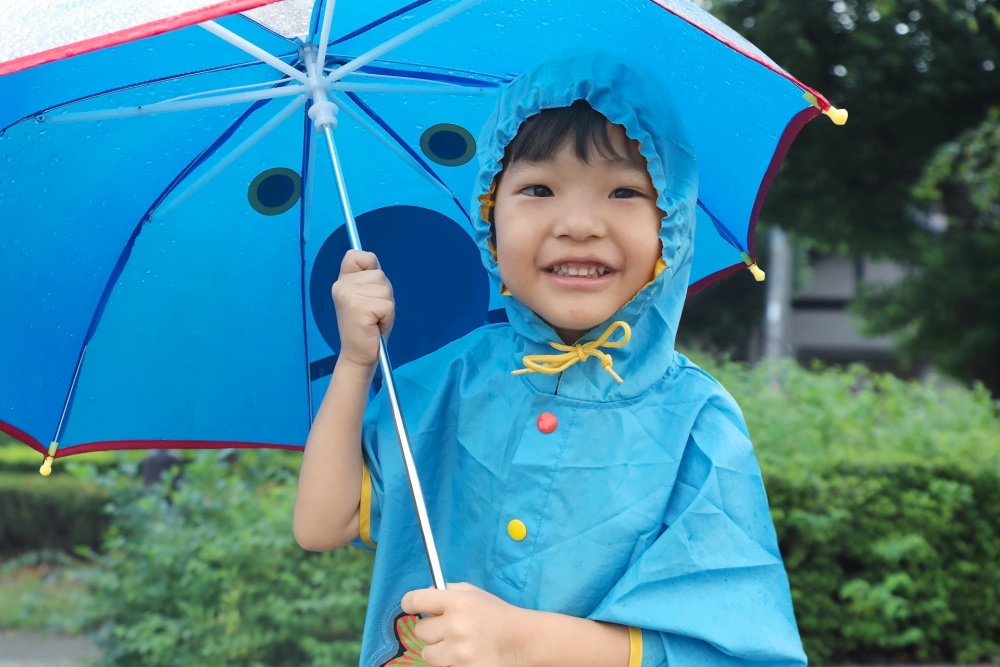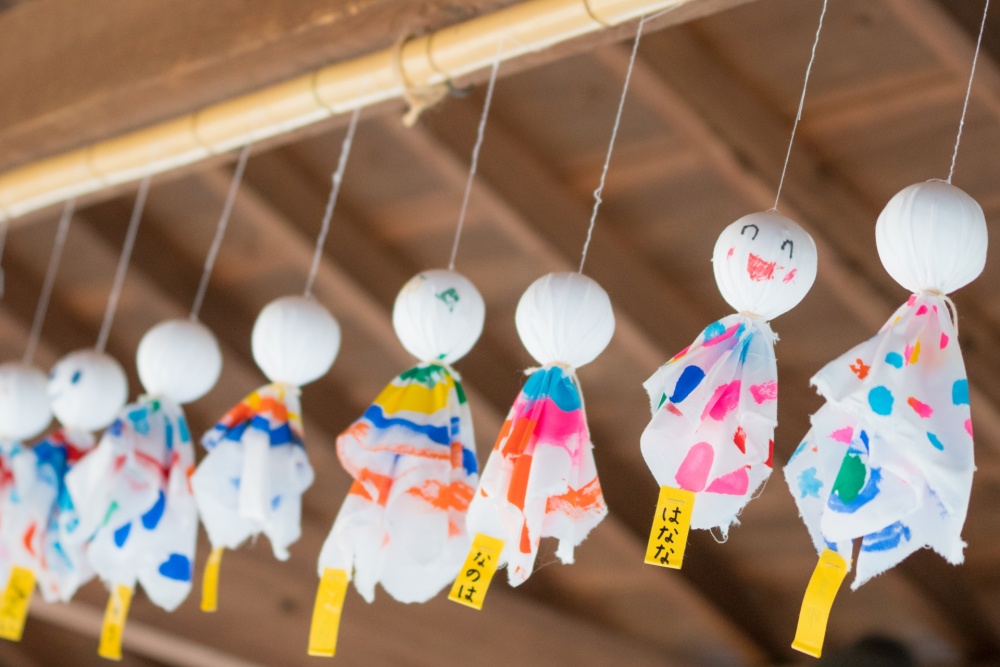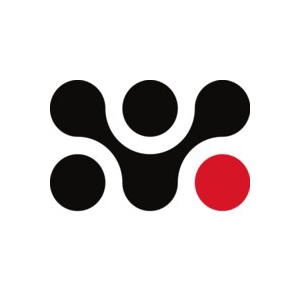Updated August 5, 2024
Surviving Rainy Season in Japan: The Definitive Guide
Those who’ve been here know that Japan is a paradise for outdoor enthusiasts.
Climbing, snowboarding, skiing, hiking… You name it, Japan has some great spots for it.
Not to mention the volcanoes, the mountainsides, the beautiful countryside (or the inaka) you can explore. After the winter ends and the snow melts, you get hit by the beauty of spring in Japan, all painted cherry-blossom pink.
And then summer comes and brings something with it, which is... lots and lots of rain.
The beginning of summer in Japan is also the beginning of the rainy season, or the monsoon season. It goes on for about a month and a half, and it gets very humid.
However, Japan is no stranger to the rainy season (Tsuyu in Japanese) and the country is well equipped to deal with it once it arrives. In this post, I’ll share my best tips to help you brace yourself for the rainy season in Japan so you can still enjoy your time even in the rain.
In this article: 📝
So, When Is The Rainy Season in Japan?
As I mentioned, the rainy season usually starts at the beginning of the summer, usually some time in June. However, this varies across regions, as some start receiving the monsoon rains earlier than others.
For instance, the rains begin at the beginning of May in Okinawa, while the northernmost regions receive barely any rain at all during the season.
So, the beginning dates change drastically depending on the geographical locations of the regions.
That said, while the southernmost regions, like Kyushu and Okinawa, begin receiving the rains early, they also leave them behind earlier than other regions.
For most Japanese regions that are located somewhere in between the southern and northern parts, however, the rainy season starts at the beginning of June and lasts until mid-July. Confusingly, it can also change quite a bit year-by-year. This makes it hard to predict when it will come, but we can look at data from 2024 to get some idea.
Rainy Season Dates in 2024
For reference, here are the beginning and end dates for all Japanese regions in 2024:
Okinawa: May 9 - June 23
Kyushu: May 31 - July 14 (Begins and ends a few days late in the southern part of the region)
Shikoku: June 5 - July 18
Chugoku: June 7 - July 21
Kansai: June 7 - July 21
Kanto: June 8 - July 21
Chubu: June 12 - July 24 (Begins and ends a few days late in the southern part of the region)
Tohoku: June 12 - July 25 (Begins and ends a few days late in the southern part of the region)
As you can see, Hokkaido and Ogasawara Islands in Okinawa aren’t even mentioned here, as they get little to no rain during this period.
However, don’t let this trick you, as the weather in these regions can get pretty harsh and cold while the other regions experience heavy rain and humidity. So, at the end of the day, it’s all about picking your struggles.
Speaking of which, let’s talk about how much it really rains and go over the specific challenges of Japan’s rainy season.
What To Expect In Terms of Weather: Rainy Season Japan
First off, it may as well be called the “overcast season” because despite being the “rainy season”, it doesn’t rain all the time or even every day.
However, you will realize that the sky is a depressive shade of gray most of the time, as the overcast weather persists throughout the monsoon season.
The good news is that the weather isn’t cold during this time. You’re looking at about 25°C on average, which is 77°F.
Normally, this isn’t an uncomfortable amount of heat by any means, but heat isn’t the worst challenge you’ll deal with anyway. It’s the humidity that’ll get you.
The monsoon season gets extremely humid, and you’ll feel like a sticky, slimy mess wherever you go, even if you’ve showered minutes ago. As the humidity makes the heat more pronounced, you also feel it’s hotter than usual.
At any rate, you’ll see the weather change drastically, and some days may feel hot while others feel colder. The ever-changing weather is a part of the monsoon season and can result in heavy gusts of wind and thunderstorms, with the occasional sunny and humid weather sprinkled in between the overcast, grey skies that’s par for the course.
So, you may be asking if there’s anything you can do to stay dry and preserve your sanity during the rainy season. Thankfully, this isn’t Japan’s first rodeo under the rain, so they have plenty of solutions to make the rainy season go by easier. Let’s take a look.
How To Face The Rainy Season: Be Prepared
As a foreigner who may not be accustomed to the harsh conditions the rain and humidity can bring, being prepared can help you enjoy the monsoon season better.
Let’s explore some tips and the items you can buy to make being under the rain a little more bearable.
Defeat The Humidity: Exhaust Fans And The AC Are Your Friends
This is, perhaps, the most important tip to get through the rainy season, as your home will be your ultimate shelter during this time, and it’s important to learn how to keep it in optimal conditions.
As it rains constantly, the monsoon season is extremely humid, which makes dealing with the humidity your number one problem. Luckily, Japan is no stranger to the rain, so many houses come with exhaust fans that work in reverse, sucking the air from inside to release it outside.
During the monsoon season, many people leave their exhaust fans on 24/7 as it helps keep the humidity under control, so don’t be afraid to run your fans as much as you need.
Still, these are usually only placed in bathrooms and kitchens where humidity is the highest. This is why, for the rest of the house, you’ll have to use the dry mode of your AC unit.
Japanese air conditioning units are very popular in Japan, and all units come with a “dry mode” that dehumidifies the air. This is great for dealing with the humid heat, as running the AC alone doesn’t provide much relief.
Unlike your exhaust fans, however, constantly running the dehumidifying function on your AC unit will be pretty costly. That said, running it during peak humidity hours should suffice without adding too much to your electricity bill.
Learn To Face The Rain Like a Boss: Umbrellas And Ponchos Save Lives

Dealing with humidity at home is one thing, but as the rainy season goes on for over a month, you’ll eventually have to go out when it’s raining, even if you work from home full-time.
Thankfully, the following tools can help you get ahead of the rain and continue to enjoy your life.
The first one’s a no-brainer – investing in a good, sturdy umbrella is crucial. You want this to be a compact one that collapses so you can take it on the go and carry it easily in your backpack.
That said, monsoon season comes with harsh winds, rendering umbrellas useless at times. You’ll see rain coming down sideways in the wind, and for this, I recommend having plastic ponchos in your bag at all times.
These are usually see-through and come in many colors. You can easily put them on whenever it’s raining. The same goes for a rain jacket as well, as long as it's as compact and small as a rain poncho.
A poncho or an umbrella can protect your head and your torso from getting wet for the most part, but what about your lower half?
These Boots Are Made For Splashin’ Around: Rain Boots Are a Must
With all the puddles of rainwater everywhere, getting water, or worse, mud in your shoes is inevitable.
This is why investing in a good, sturdy pair of rain boots is a must. Of course, rain boots work brilliantly for getting you through the toughest rainy weather, but they might be overkill on days that aren’t so rainy.
So, in addition to rain boots, I also recommend getting at least one pair of waterproof shoes to keep your socks and feet dry.
In addition, you can buy reusable shoe covers, usually made of silicone, that you can easily carry in your bag. These slip over your shoes and protect your shoes and feet from getting wet, allowing you to walk carelessly over puddles.
Water-Proof Carrying Cases: Your Gadgets Need To Stay Dry, Too
While it’s important to protect yourself from the rain, you may also need to carry around a bag with your laptop, tablet, or books, all of which don’t do well in moist environments.
However, a simple solution awaits you at the closest Konbini, Muji, or Don Quijote. Waterproof knapsacks, which look like backpacks and have string straps, can be found at any of these stores and are usually pretty affordable, costing about 300 yen.
Of course, you can also invest a little more and get yourself a good-quality waterproof handbag or backpack that holds many more items and has multiple compartments of varying sizes.
After all, the rainy season returns in full force the next year, and your future self will definitely thank you once it does!
Body Wipes, Cooling Sprays, and Hand Towels: Summer Essentials
As I mentioned, one of the worst parts of the rainy season is the humidity and the sticky feeling your skin gets as soon as you step outside.
Naturally, the humidity makes it feel hotter, which causes you to sweat more, and no amount of showers can save you from being a sweaty mess in public. This why cooling sprays, body wipes, and hand towels are essentials you always want to keep in your bag.
Body wipes are essentially wet wipes that are suitable to use on your body, and most of these also come with a “cooling” effect. This effect is achieved with the addition of menthol, and you can find ones that are specifically made for the body and the face.
Another option is a cooling spray, which creates an instant cooling effect on the skin that also usually comes from menthol, but it works, nonetheless.
Alternatively, if you just want to pat your face dry, carrying around a small hand towel can also be a good idea.
Desiccants and Moisture Absorbers: Fight The Mold
Keeping yourself and your belongings dry throughout the rainy season is important, but what’s arguably even more crucial is to keep your house dry unless you want a mold problem on your hands.
As you may know, mold loves humidity and all the little cracks and corners that stay humid and warm all the time. The usual places to check for mold are your bathrooms, toilets, and kitchens, which turn into breeding grounds for mold during the monsoon season.
Luckily, both the awful smell of mildew and the occurrence of mold can be prevented by using desiccant packs and special moisture absorbers you can place all over your house.
Make sure to place these all over your closets and cabinets, especially in your bathroom. This will help keep your things dry and are usually safe for human health as most of them only contain natural ingredients like activated charcoal.
Things to Do During Rainy Season Japan: Rainy Season Japan Culture

Now that you’re all geared up and ready to face the rainy season, let’s talk about the enjoyable parts of it. As it’s a prominent annual occurrence in Japan, the rainy season is also a part of the culture here.
For instance, have you heard about the Teruteru Bozu (てるてる坊主)? These are hand-made dolls that Japanese people learn to make when they’re kids, and they’re essentially good luck charms.
More specifically, the luck that these simple, cartoonishly ghost-like tissue paper dolls supposedly bring is sunshine or sunny weather. The dolls resemble the bald heads of Buddhist monks, and the word teru literally means “to shine.”
Teruteru-bozu dolls are hung on your porch or balcony during the rain, and their smiling little faces can bring a little more joy to your life in the gloomy rainy season.
Ume Plums and Hydrangea Flowers
Another rainy season staple is the ume plum and all food and drinks related to it, as “Tsuyu” or rainy season in Japanese literally means “plum rain”. The Japanese ume plums are ready for harvest just as the the rainy season rolls around, and it’s common to eat and drink umeboshi and umeshu around this time.
The rainy season is also the blooming season of hydrangea flowers (ajisai). These purplish-blue flowers are a sight to see during this season, and the best way to enjoy them is to visit the Hydrangea Temple, or Meigetsu Temple, in Kamakura City, south of Tokyo.
Another great place to view hydrangeas is the Bunkyo Hydrangea Festival, which takes place in the first half of June in Bunkyo City, Tokyo. The festivities at the Hakusan-jinja Shine are the main event, but you’ll also find stands on the city streets selling potted hydrangeas and souvenirs.
If you’re planning on visiting Japan, just know that most people avoid these dates due to unforeseeable weather. So, everywhere is pretty much empty during the rainy season. If the weather doesn’t bother you, keep in mind that you can visit anywhere that’s usually crowded with ease as you’ll only find a few people there.

Closing Thoughts and The “Second” Rainy Season: What Is Typhoon Season in Japan?
As I conclude my guide to Japan’s rainy season, you may still wonder: Is the typhoon season the same as the rainy season?
No. The typhoon season is early fall, starting in August, and can last until the beginning of October. Despite not being called the “rainy season”, Typhoon season actually delivers more rain overall.
It doesn’t rain all the time, but the rains are much harsher and accompanied by strong winds, lasting a couple of days. Usually every month in the typhoon season, Japan receives up to three typhoons, some of which can be quite destructive.
That said, not all places are as heavily affected by the typhoons. Northern Japan might experience less harsh conditions than Central Japan, for instance. And while it may rain frequently during the monsoon season, at least the rains are not accompanied by strong winds, although the severity of the rain has increased over the recent years.
This is all I have on the rainy season in Japan, but all of my tips above go for the typhoon season as well. That said, if you want to be prepared for natural disasters in Japan, my post on emergency survival kits can help you out.
Get Job Alerts
Sign up for our newsletter to get hand-picked tech jobs in Japan – straight to your inbox.








